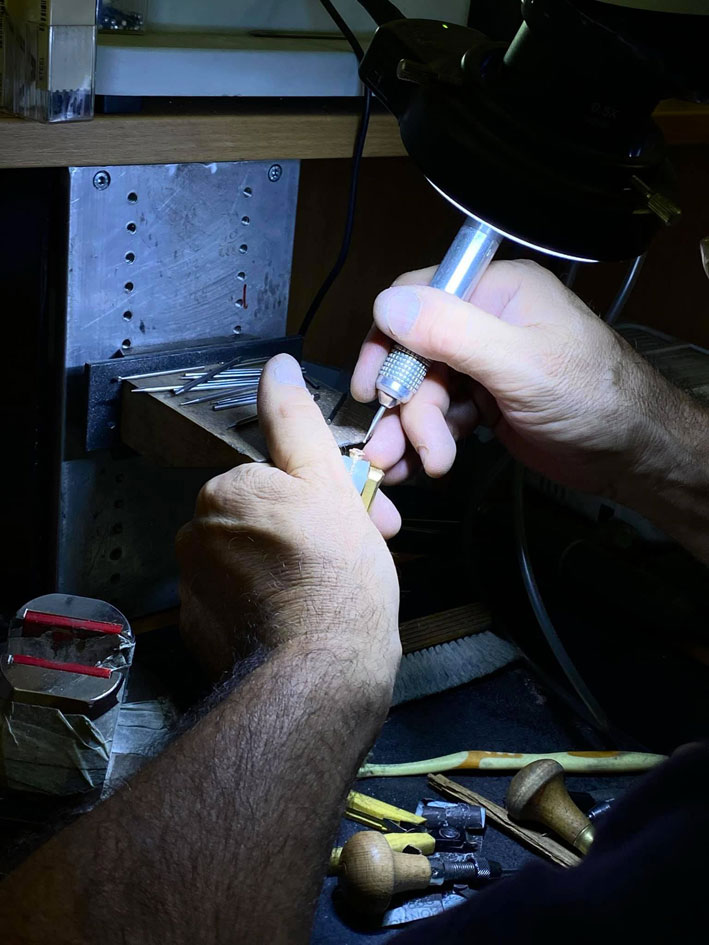Vicenzaoro is also an opportunity to meet many jewelers. And it also happens that you exchange opinions, gather moods, understand what is bubbling under the golden patina of jewelry. It also happens that, surprisingly, the concerns expressed by jewelers all converge on the same point. And they sound a lot like a cry of alarm for Italian jewelry. The opinion expressed is always the same: Italian jewelry, the one of high quality craftsmanship, risks disappearing. This is not an exaggeration and it is not a prospect of tomorrow. But it is not a hypothesis far-fetched either.
At Vicenzaoro we met jewelers of large and small companies, from the large brand active at a global level, to the boutique that creates and sells for a limited number of loyal buyers. None of these want the opinions expressed during the interviews to be published and we will respect confidentiality. But the common concept is clear: a profound transformation of the jewelry production system is underway, which will end up marginalizing the creativity and skill of expert craftsmen, the true wealth of Made in Italy, sought after and admired throughout the world.
There are two factors that determine this negative trend. The first is the shortage of manpower, of young people who want to learn the trade with a slow but rewarding learning path. Working on jewelry, creating, understanding all the phases of conception and production, requires time and patience. Only in this way, however, can we obtain the quality that, combined with creativity, makes high-end Italian jewelry a special object.
The other factor is the increasingly intense activity of large international brands in the goldsmith districts, particularly in Valenza. Large groups such as Bulgari, which is part of the French giant LVMH (we report it because it is the case most cited by jewelers, but the same goes for others) have opened large production centers and hired hundreds of young apprentices. But these apprentices, say the large and small Italian jewelers, will never become good craftsmen, because the work in these new high-end jewelry factories is organized according to a Fordist model. In short, each worker at the workbench is responsible for learning only a small part of the creation of the jewel. However, he will continue to ignore everything else, a bit like in an assembly line, almost like Charlie Chaplin in the celebrated film Modern Times (if you haven’t seen it, watch it).
On the other hand, the trade association, Federorafi, had noted a few months ago that the excellent performance data are at risk due to the inability of the over 7,100 companies in the sector to meet market demands due to the impossibility of finding specialized labor. The same survey had found that over 50% of those employed in the sector will be of retirement age in less than ten years, while only 13% of those employed are under 30. And finally, that the needs for new employees and employees for generational turnover in companies in the next five years can be estimated at a percentage that is close to 8-10% of the total current workforce (3,000 employees).
«I can only reiterate the importance of seriously addressing the generational transition. Equally important for us, trade associations, is to continue, always on this stage, the dialogue with the young talents in an equally open manner as we do today», stressed Stefano Andreis, president of Federpreziosi Confcommercio, the association of retail companies, at Vicenzaoro. Words that should stimulate politics to a more effective initiative regarding training, without being satisfied that the increase in employment is delegated to the luxury multinationals that, obviously, look after their own interests, perhaps with fiscal help.
Without forgetting the trend regarding the sale of Italian brands that have emigrated or are ready to move under the umbrella of a large international group. The latest in order of time was Vhernier, another brand that, coincidentally, works in Valenza and that has passed under the banner of Richemont. In short, if many clues make a proof, many complaints of the same exact tenor make us fear that the concerns for the future of Italian jewelry are not simple complaints of category, but that the outlook is really not very bright.











